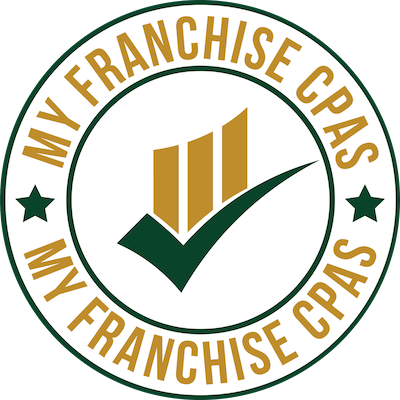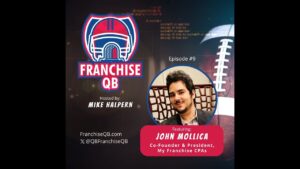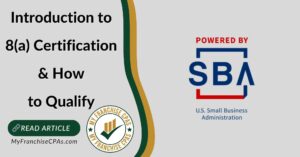Introduction
Securing funding is one of the most critical challenges when starting or acquiring a business. Traditional funding methods, such as loans or investment from venture capitalists, often come with strings attached, including interest payments, equity dilution, or stringent repayment terms. For entrepreneurs who are looking for alternative methods of funding, two powerful yet creative structures are available: Rollovers as Business Startups (ROBS) and the Roth ROBS+ rollover.
This white paper provides a comprehensive examination of these two funding methods. We will delve into their mechanics, assess the advantages and disadvantages, discuss long-term implications, and offer practical examples of how they can be utilized. This analysis will help potential business owners make an informed decision about whether these methods align with their financial goals and risk tolerance.
NOTE: Most types of retirement plans qualify for these programs, including 401(k), Roth 401(k), traditional IRA, 403(b), SEP IRA, ESOP, 457(b), TSP, Annuities, Defined Benefit, Money Purchase, Pension, Profit Sharing, and others. However, ROTH and inherited IRAs do not qualify. Annuities may have surrender costs. Funds from current employer’s retirement plans are often not accessible until you terminate employment, although funds from a previous employer rolled into your current employer’s plan are often accessible.
ROBS: Rollovers as Business Startups
Overview: ROBS allows individuals to use their pre-tax retirement funds from qualified plans, such as those in a 401(k) or traditional IRA and others, to finance a business without incurring early withdrawal penalties or taxes. The process involves rolling over or transferring these funds into a new 401(k) or company retirement plan established within a newly formed C-corporation. This company’s retirement plan then purchases stock in the C-corporation, providing the capital needed to start or acquire the business.
Pros:
- No Debt: By utilizing ROBS, entrepreneurs can access capital without taking on debt, which means avoiding interest payments and monthly obligations that could strain cash flow and negatively impact debt ratios, credit scores and the ability to raise future capital.
- No Penalties or Taxes: Unlike early withdrawals from retirement accounts, which can trigger taxes and penalties, ROBS allows for penalty-free access to retirement funds.
- Full Ownership: The entrepreneur maintains full control and ownership of the business without needing to share equity with investors or partners. This could provide significant annual tax benefits via dividends and capital gain tax exemptions in the future and protection from capital gain tax rate increases.
- Flexibility: ROBS can be combined with other forms of financing, such as SBA loans, to increase the total capital available for the business.
- Wealth preservation: Retirement plan assets often provide superior wealth and liability protection (especially with accelerating bankruptcy risks due to healthcare – now the #1 risk of bankruptcy in retirement).
Cons:
- Complex Setup: Establishing a ROBS involves forming a C-corporation, setting up a new 401(k) plan, and adhering to specific IRS regulations. This requires expert legal and financial advice.
- Ongoing Compliance: The business must maintain ongoing compliance with IRS regulations, including annual filings and valuations, to avoid disqualification and penalties. Providers assist by offering these services for a fee.
- Risk to Retirement Savings: The most significant risk is the potential loss of retirement savings if the business fails. Unlike diversified investments in traditional retirement accounts, all the eggs are placed in one basket—the business (be aware that one can elect to invest ‘part’ or all of their retirement accounts). An important benefit is that you are risking ‘pretax’ funds – if the business were to fail you have forced the government to assume up to half of your investment risk versus using cash (where you risk 100%) or by liquidating your retirement fund and often paying taxes plus a 10% penalty (losing up to 50% of your investment capital).
- Costs: The setup and maintenance costs of a ROBS plan can be significant, including legal fees, administrative costs, and ongoing compliance expenses. These can often be offset with tax deductions/tax credits, wealth preservation and other short / long-term benefits.
Long-Term Ramifications: The long-term impact of using ROBS hinges on the success of the business. If the business thrives, the entrepreneur could see significant returns, potentially far exceeding the growth that could have been achieved in a traditional retirement account. However, if the business struggles or fails, the loss of retirement savings can jeopardize long-term financial security. Additionally, because the funds are pre-tax, any future distributions from the business will be subject to income tax, reducing the net returns. Profits from the business can often be distributed as a tax-friendly dividend (reducing taxes up to 50+% versus income taxes) to grow tax-deferred.
Practical Example: Consider an entrepreneur who has accumulated $500,000 in a traditional 401(k) and wants to start a franchise business. By using ROBS, they roll over their retirement funds into a new C-corporation, which then invests the funds in the franchise. The entrepreneur avoids taking on debt and retains full ownership of the franchise.
ROBS+: 2nd Generation Roth ROBS+
Overview: ROBS+, is a variation of the ROBS method that uses a Roth investment feature— composed of post-tax contributions— or use of pretax funds later converted to a Roth investment. Similar to ROBS, ROBS+ involves rolling over retirement funds into a new company retirement plan within a C-corporation. The difference lies in the nature of the funds being used: Roth funds are post-tax, meaning any appreciation (including dividends and their growth) when withdrawn after 59 ½ years of age are tax-free. These tax-free funds can also be reinvested or used to expand or acquire other future businesses.
Pros:
- Tax-Free Growth: Since Roth funds are post-tax, any growth in the business, dividends and subsequent withdrawals during retirement are tax-free from capital gain and income taxes and potential tax rate increases. This can result in significant tax savings if the business is successful.
- Reduced Annual Taxes: Dividends allow you to reduce your taxes up to 50+% and then grow tax-free. At 59 ½, there is the potential option to take profits out as dividends versus paying income tax. This could potentially cut your taxes up to 50+% during the last decade+ of your life.
- No Penalties: ROBS+ allows access to Roth retirement funds without penalties, provided the structure is correctly set up.
- Ownership and Control: Like ROBS, ROBS+ enables the entrepreneur to retain full ownership and control of the business.
- Potential for Greater Savings: The tax-free nature of Roth distributions in retirement can lead to significant long-term savings, especially if the business generates high returns.
Cons:
- Complex Setup: Establishing a ROBS+ requires the same level of complexity as ROBS, including forming a C-corporation and setting up a new 401(k) plan.
- Risk to Retirement Savings: While Roth funds offer tax advantages, the risk of losing these post-tax savings if the business fails remains a significant concern.
- Costs: The costs associated with setting up and maintaining a ROBS+ plan is similar to those for ROBS, including legal, administrative, and compliance fees. These can often be offset with tax deductions/tax credits, significant and superior tax savings, wealth preservation and other short/long-term benefits.
- Limited Capital: Roth accounts typically have lower contribution limits compared to pre-tax retirement accounts, which may restrict the amount of capital available for the business. However, traditional pretax retirement funds can be converted to a Roth.
Long-Term Ramifications: The long-term tax, wealth protection and other implications of using ROBS+ are particularly attractive if the business is successful. The ability to withdraw funds tax-free during retirement can result in substantial savings, particularly if the business grows significantly.
Practical Example: Imagine an entrepreneur with $200,000 in a qualified pretax retirement plan (see above list) or Roth 401(k) who wants to acquire an existing business. By using ROBS+, they roll over the funds into a C-corporation that purchases the business. The entrepreneur avoids immediate taxation and penalties, and if the business grows, the Roth 401(k) value increases. When the entrepreneur reaches 59 ½ years of age, they can withdraw funds from the Roth 401(k) tax-free.
Both the ROBS and ROBS+ options provide:
- Annual tax benefits for distribution of profits as dividends, reducing taxes up to 50+%. ROBS dividends grow tax–deferred. ROBS+ allow dividends to grow tax-free. Both allow for dividend re-investment for future business capital needs.
- Exemption from capital gain taxes and efforts to increase that rate.
- Ability to allow net sales proceeds to grow either tax-deferred or tax-free
- Provide added wealth protection during retirement when healthcare liability risks are rising aggressively. ROBS provide limited protection after 73, ROBS+ provide superior life-long wealth protection for both spouses.
- Both provide wealth protection and growth potential for children’s inheritance for another ten years.
- ROBS inheritance proceeds are taxable to children, ROBS+ are tax-free to children and continue to grow tax-free for another ten years.
Who Should Consider ROBS or ROBS+?
ROBS:
- Entrepreneurs who want to avoid taking on debt and are willing to invest a significant portion of their pre-tax retirement savings into their business.
- Entrepreneurs that desire to acquire a bigger business or are considering multi-unit business acquisition or growth and may need added equity injection to leverage their ability to acquire more capital via loans or other resources.
- Individuals who are confident in their business plan and have a high tolerance for risk, understand that their retirement savings are on the line.
- Those who are willing to work with professionals to help navigate the complexities and ongoing compliance requirements associated with maintaining a C-corporation and a 401(k) plan.
- Entrepreneurs who expect to be in a higher tax bracket or expect tax rate increases during retirement and are looking to manage their taxable income strategically.
- Entrepreneurs that desire added wealth and liability protection.
ROBS+:
- Entrepreneurs who have significant Roth retirement savings and wish to use these post-tax funds to finance their business while taking advantage of tax-free growth potential.
- Individuals who are particularly concerned about the tax implications of their retirement savings and want to maximize tax-free income during retirement.
- Those who are confident in their business plan and willing to risk their post-tax savings, with a strong belief in the business’s potential for high returns.
- Entrepreneurs who expect to be in a lower tax bracket during retirement or anticipate significant growth in the business that would benefit from tax-free distributions.
- Entrepreneurs that desire superior life-long wealth protection that is not subjected to Required Minimum Distributions for spouse and children and desire to pass on tax-free wealth to family.
- Entrepreneurs that desire added protection from future tax rate increases.
- Entrepreneurs that desire added protection from future Medicare and IRMAA premium increases (Note: Roth distributions, unlike tax deferred distributions, cannot be used to toward your personal or spouse’s Medicare premium increases).
- Entrepreneurs that have the desire to grow, expand or acquire additional benefits that could benefit from reduced tax dividends and tax-free growth to increase future net capital available to spring-board and accelerate their growth
Conclusion
Both ROBS and ROBS+ offer powerful but complex ways to fund a business using retirement assets. The decision to use one of these methods should not be taken lightly, as each comes with significant risks and potential rewards. Understanding the long-term implications, from the impact on retirement savings to the tax consequences, is crucial.
Recommendations
- Consultation: Engage with financial advisors and legal professionals who specialize in ROBS and ROBS+ to gain a clear understanding of the implications for your specific situation.
- Providers: Research providers with fully certified support resources with the ability to adapt your plan as you grow. Use providers that will provide both audit representation and liability protection.
- Thorough Planning: Develop a comprehensive business plan that includes detailed financial projections, risk assessments, and contingency strategies to ensure the viability of using retirement funds.
- Risk Assessment: Consider the potential impact on your retirement savings and future financial security. Assess your risk tolerance and ensure you are prepared for the possibility of losing your investment.
- Long-Term Strategy: Evaluate your long-term financial goals, including your expected tax bracket in retirement, and consider how ROBS or ROBS+ could fit into your broader retirement planning strategy.
By carefully weighing the pros, cons, and long-term ramifications of ROBS and ROBS+, entrepreneurs can make informed decisions that align with their business objectives and retirement plans. These funding methods offer unique opportunities but require a strategic approach to maximize their benefits and minimize risks.
Acknowledgment of Contributions
We gratefully acknowledge the valuable contributions of Benetrends Financial, the originator of ROBS/ROBS+, and Larry Carnell (ABI, CBI, CFB, CFE)—an award-winning entrepreneur, franchise expert, and recognized authority on ROBS and ROBS+. As pioneers in the industry, Larry Carnell and Benetrends Financial played a crucial role in introducing both the first-generation ROBS and the innovative second-generation ROBS+. Their expertise and insights have enhanced the content of this white paper, ensuring its accuracy, relevance, and value to prospective business owners exploring alternative funding methods.

Larry Carnell ABI, CBI, CFB, CFE
https://www.benetrends.com/larry-carnell





